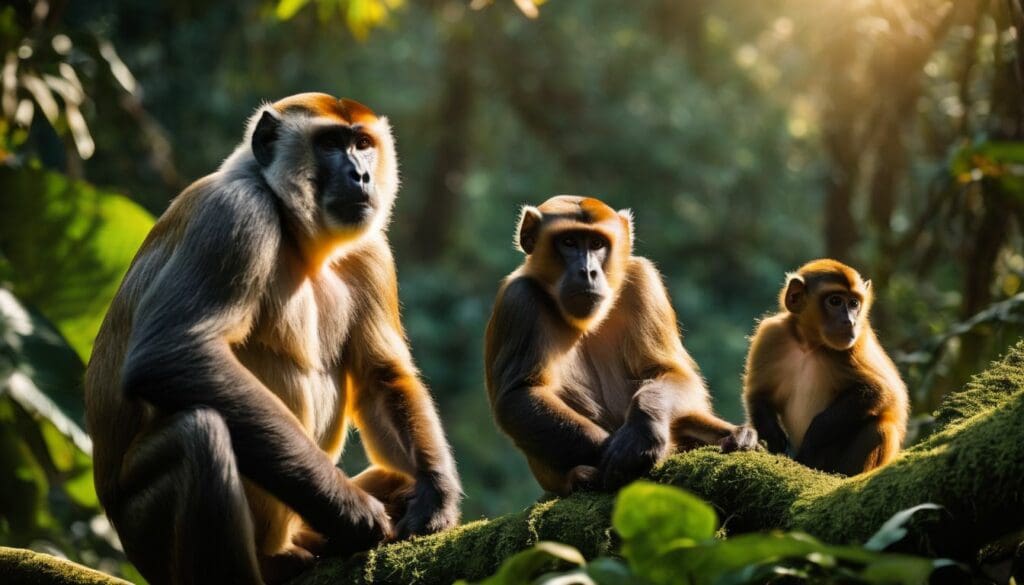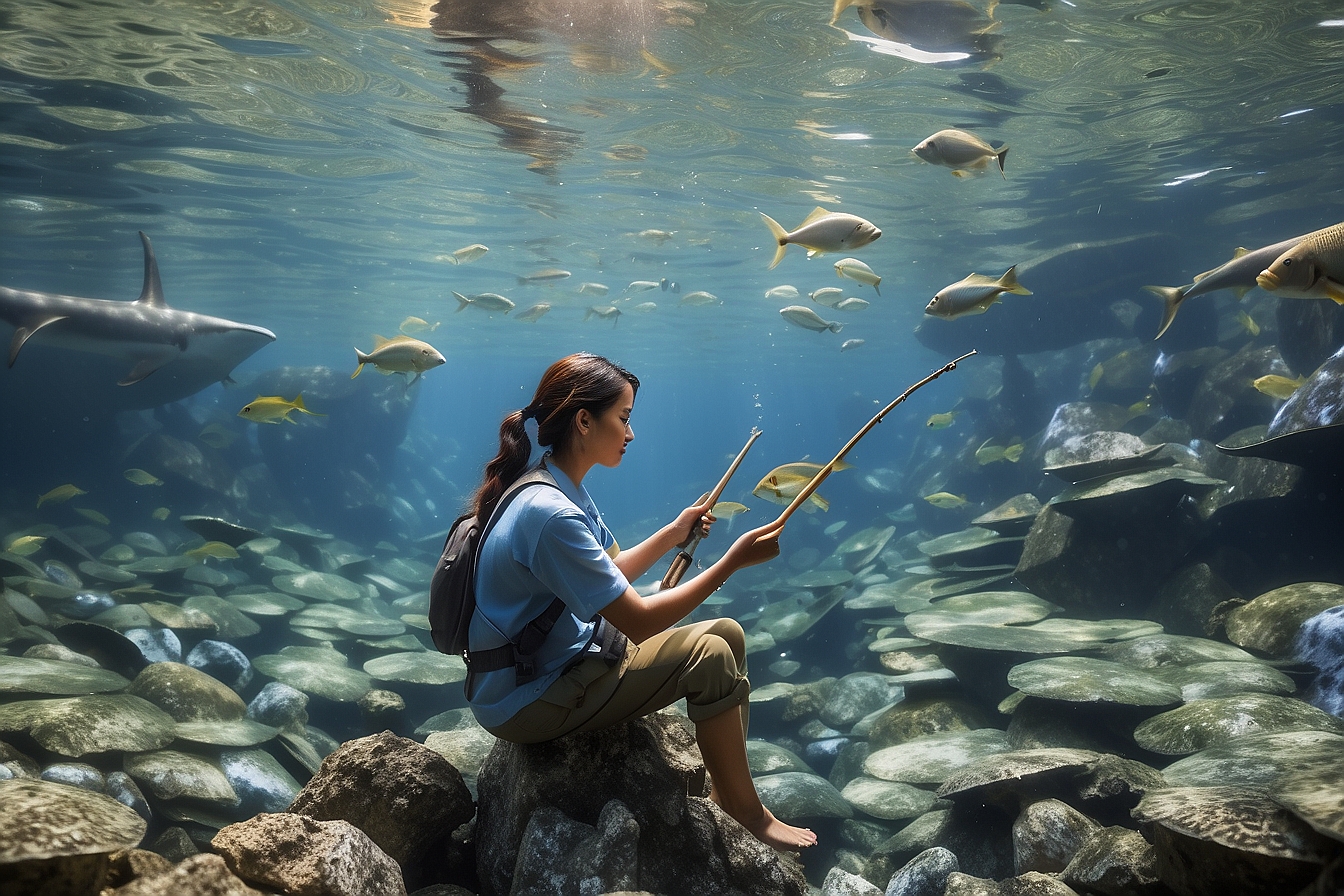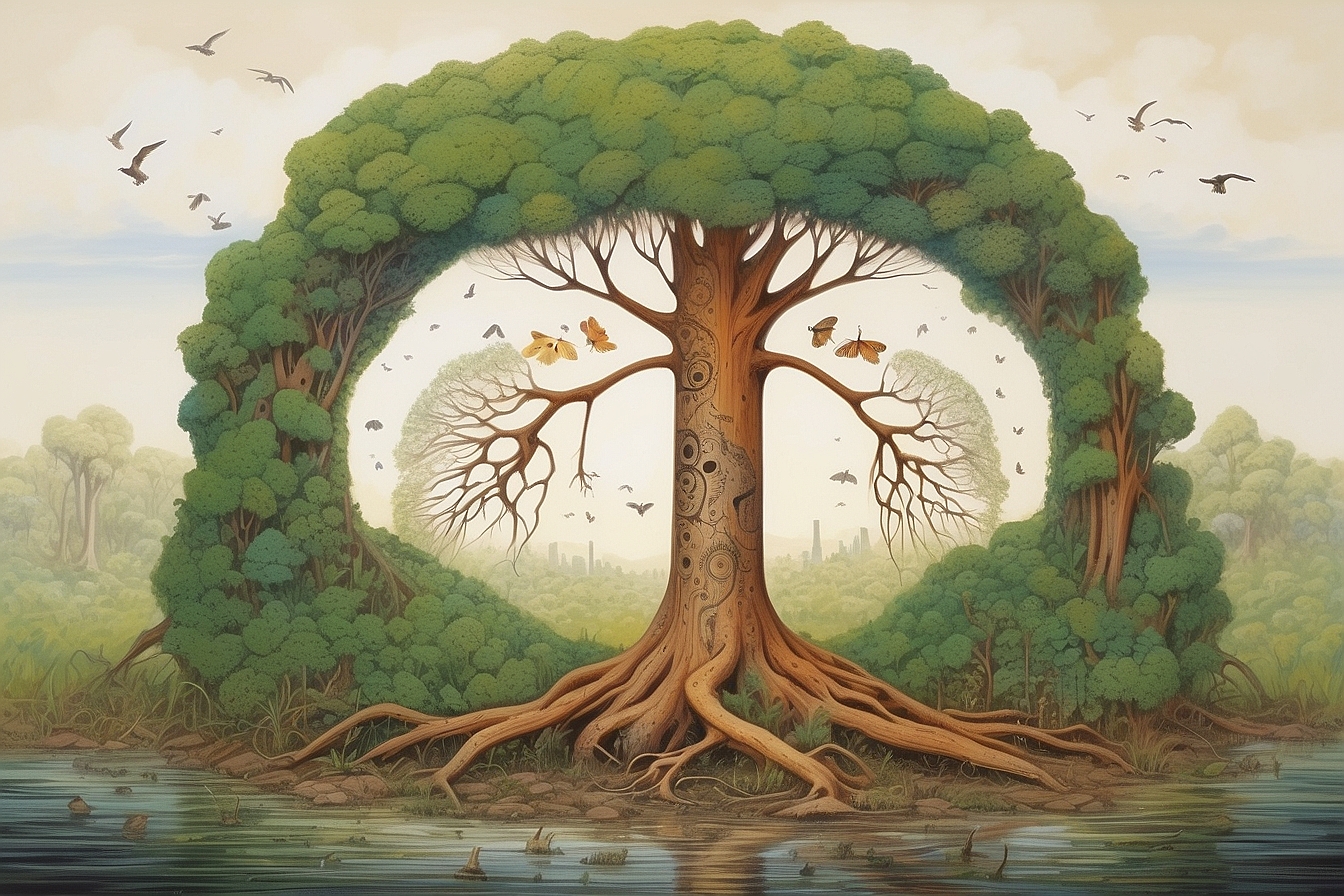Witnessing our closest kin in the animal world grappling with formidable threats can stir a profound sense of distress. It’s an all too familiar feeling of powerlessness that many of us share.
That’s precisely why we’ve delved into understanding the perils facing primates – and it’s startling to learn that close to 60% of primate species are teetering on the brink of extinction.
This article is crafted to transform your concern into tangible action for the safeguarding of these majestic beings. Together, we can make strides towards their preservation!
Key Takeaways
- Primate species are crucial for maintaining biodiversity and play key roles in their ecosystems, such as dispersing seeds and absorbing carbon dioxide, yet nearly 60% face the risk of extinction.
- Human activities like habitat destruction, disease transmission, and illegal wildlife trade severely threaten primate populations; conserving their habitats is essential for their survival and ours.
- Organisations such as WWF and IUCN are actively working to protect primates by managing protected areas, combating illegal wildlife trade, monitoring populations, promoting education programmes and supporting scientific research.
- Individuals can contribute to primate conservation efforts by educating themselves about the issues faced by these animals, supporting conservation organisations or initiatives, participating in local projects or adoption programmes that provide direct aid to conservation actions.
- Forests harbour many primate species; therefore, efforts in forest conservation have a significant impact on protecting these creatures from habitat loss which is one of the major threats to their existence.
The Importance of Primate Conservation
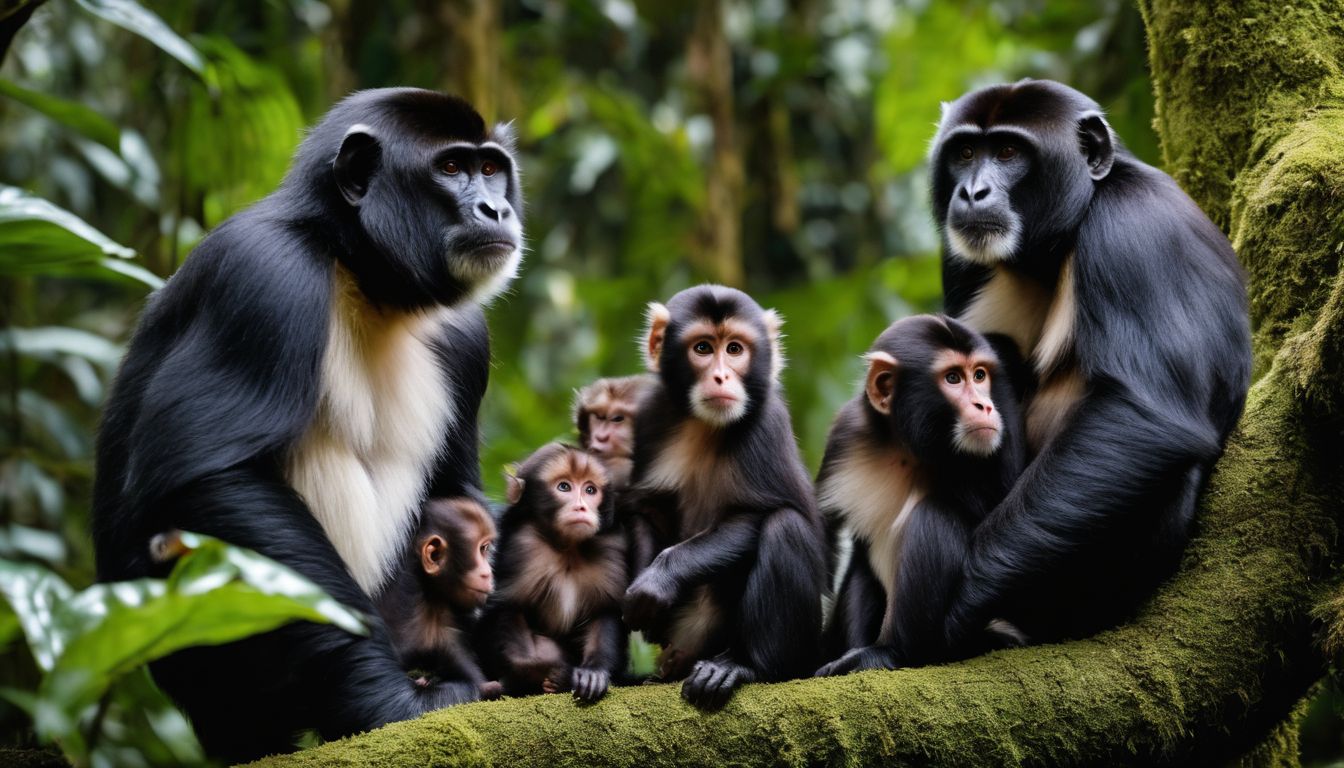
Protecting primates is crucial for maintaining the rich tapestry of global biodiversity. These animals play key roles in their ecosystems as seed dispersers and help in maintaining forest structures, which are vital for combating climate change by absorbing carbon dioxide from the atmosphere.
Their loss could trigger a cascade of negative effects across ecological communities.
We see ourselves reflected in the eyes of chimps, orangutans, and other non-human primates, recognising our shared ancestry and intricate social networks. Preserving their habitats ensures that we protect these complex relationships and safeguard a part of our own heritage on this planet.
Conservation efforts like establishing protected areas and supporting ecotourism make a profound difference not only to primate species but also to entire ecosystems.
The Close Connection: Humans and Primates
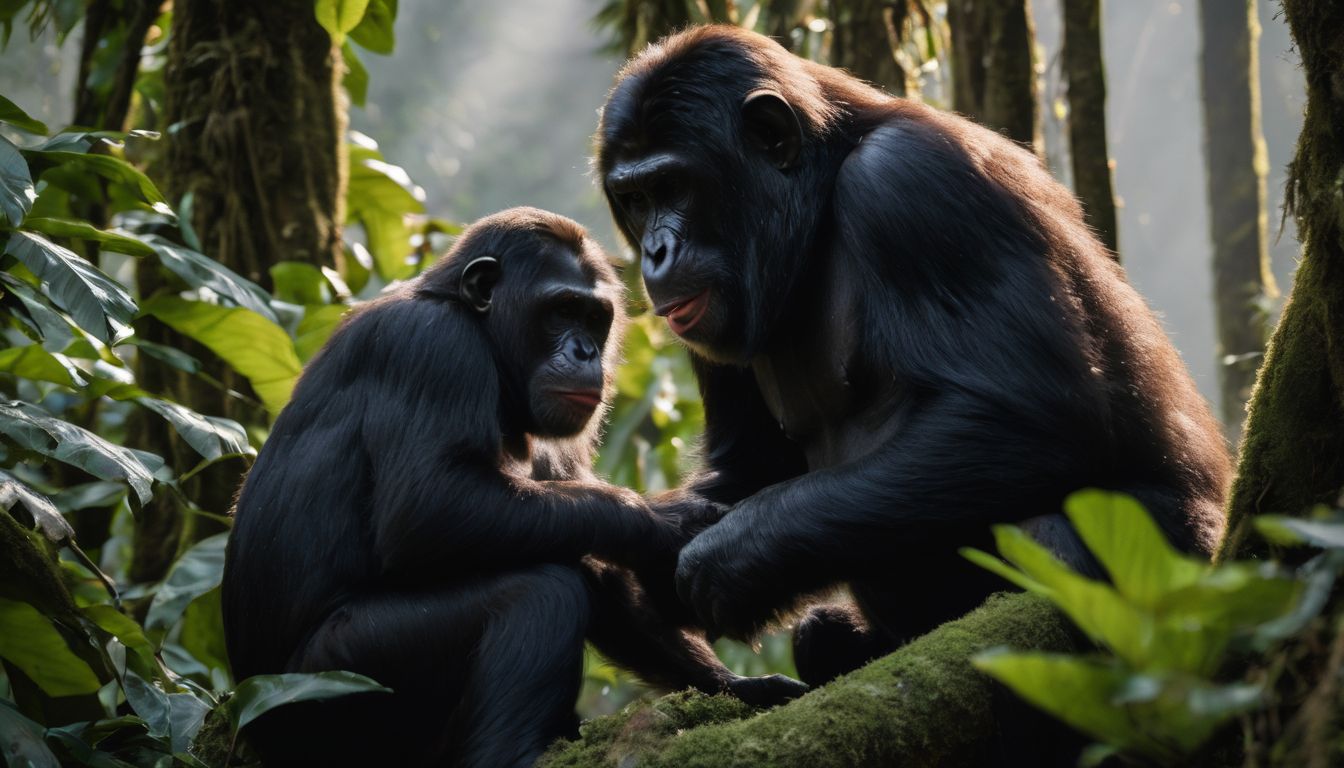
We share a profound bond with primates, one that is etched deeply into our DNA. By peering into their world, we not only glimpse our evolutionary past but also gain insights that continue to shape our understanding of what it means to be human.
Sharing 98% of our genes with Chimpanzees
Our genetic makeup is incredibly close to that of chimpanzees, our nearest living relatives. This staggering 98% similarity means we have much more in common with these great apes than meets the eye.
Their gestures and social behaviours offer us a mirror into our own ancestry, providing crucial insights into human evolution. As we delve deeper into primate research, understanding our shared genetics guides conservationists on how to better protect these intelligent beings from threats like habitat loss and deforestation.
Primate behaviour often reflects back on what once was part of human nature too. Observing chimps helps scientists untangle the complex web of our past actions and societal structures.
Each study brings us closer to grasping the essential roles primates play in tropical forests, such as seed dispersal which maintains biodiversity. Protecting them goes hand-in-hand with safeguarding entire ecosystems critical not just for wildlife but also for combatting climate change.
And now, it’s time to turn our attention to the grave dangers facing primate populations across the globe.
Understanding primate behaviour and its reflection on humans
As we delve deeper into the web of life, it becomes apparent that observing our primate relatives offers vital insights. Studying their social structures, for example, reveals complex relationships and communication methods mirroring our own societal norms.
Primates show empathy, resolve conflicts and even use tools in ways that echo human behaviors. Grasping these similarities aids us not just in conservation efforts but also deepens our understanding of the evolutionary roots of our conduct.
Furthermore, recognising emotions like joy or distress in species such as bonobos or mountain gorillas enables us to connect on an emotional level which can drive a more passionate response towards wildlife conservation.
These observations empower us to protect habitats essential for primates’ survival – forests that also play a pivotal role in climate change mitigation efforts by absorbing carbon dioxide from the atmosphere.
It’s this intricate interconnection between primate behaviour and human action that underpins the importance of preserving these endangered species who share so much with us.
Current Threats to Primate Populations
Our closest cousins are facing a crisis, as primate populations plummet due to an array of serious threats. It’s critical we recognise these dangers before it’s too late — pushing us to delve into the pressing challenges they must overcome for survival.
Disease
Disease poses a serious threat to primate populations worldwide, often spread by human encroachment into their habitats. As we venture deeper into the forests for resources or settlement, primates are exposed to pathogens that can devastate entire communities.
The Ebola virus, for instance, has wreaked havoc among gorillas and chimpanzees in Central Africa, with mortality rates reaching as high as 95% in some groups.
We must acknowledge our role in this problem and work towards minimising the risks of disease transmission. In regions like the Democratic Republic of Congo, efforts are underway to educate local communities on how to coexist with wildlife without putting each other at risk.
By limiting habitat destruction and maintaining a safe distance from these vulnerable species, we can help curb the spread of deadly diseases that threaten the survival of our closest genetic relatives.
Illegal Wildlife Trade
While disease poses a significant risk to our primate relatives, the illegal wildlife trade wreaks its own brand of havoc. Prized as exotic pets or hunted for their body parts and meat, these magnificent creatures are stolen from their natural habitats.
This illicit activity not only threatens individual animals but also destabilises entire populations, pushing species like the eastern chimpanzee and the Tapanuli orangutan towards extinction.
We witness heart-wrenching losses as lemur families in Madagascar dwindle and silverbacks in the Congo vanish. The bushmeat trade turns survival into a dire game for primates, including Miss Waldron’s red colobus which now teeters on the edge of oblivion.
It’s clear that this shadowy commerce is an affront against nature that undermines decades of conservation efforts by organisations such as the Wildlife Conservation Society and the IUCN Species Survival Commission.
Every time a hand reaches out to save them, another threatens to undo all progress—this must end if we hope to preserve our planet’s irreplaceable biodiversity.
Efforts in Primate Protection
In the battle for primate protection, numerous initiatives have unfolded across the globe, spearheaded by dedicated organisations committed to reversing the plight of our closest cousins.
The World Wildlife Fund (WWF) stands at the forefront of this struggle, leveraging forest conservation as a powerful ally in safeguarding these vital species and their habitats.
WWF Initiatives
- We partner with governments and local communities to manage protected areas effectively. These regions, including places like Bwindi Impenetrable National Park, offer a safe haven for species like mountain gorillas and chimpanzees.
- Our teams work tirelessly to fight illegal wildlife trade that targets primates for pets or bushmeat. By disrupting these networks, we protect not only the animals but also uphold international conservation laws.
- We collaborate with the Primate Specialist Group of the IUCN to monitor primate populations. Together, we update the IUCN Red List of Threatened Species which guides global conservation priorities.
- Through educational programmes, we raise awareness about the critical role primates play in maintaining ecosystems. We explain how trees are vital for primate survival as they absorb carbon dioxide from the atmosphere and stabilise weather patterns.
- We support scientific research on endangered primates such as Procolobus badius waldroni and Leontopithecus rosalia. This knowledge helps us understand how best to protect them.
- Our adoption programmes enable individuals around the world to directly contribute to primate protection efforts. These initiatives provide crucial funding for conservation activities on the ground.
- The campaign against deforestation is a key aspect of our work since forests are home to many primates. Conserving forested landscapes ensures these magnificent creatures have a future.
- We advocate for sustainable land – use policies that benefit both wildlife and people. Ecosystem services like fertile soils and clean water sources depend on healthy primate populations maintaining ecological balance.
- Engaging with national governments, we strive to strengthen environmental legislation. By securing stricter laws, we help safeguard key wilderness areas where primates live.
- Finally, our field projects include anti-poaching patrols and veterinary care for injured animals, providing immediate assistance in crisis situations and helping ensure long-term survival of primate species.
Role of Forest Conservation
Protecting forests stands as a cornerstone of primate conservation. As we work towards this goal, we safeguard the intricate ecosystems that primates call home. Forests are not only vital for the survival of our closest cousins like the Pan troglodytes (chimpanzees) and Prolemur simus but also support countless other species within their verdant realms.
We recognise that every tree preserved is a step towards stabilisation for critically endangered species such as the Leontopithecus chrysopygus (black lion tamarin) and the greater bamboo lemurs.
Our joined efforts in forest conservation contribute significantly to maintaining global biodiversity, directly impacting flagship species whose habitat loss leads to drastic declines in population numbers.
By ensuring these habitats remain undisturbed, we not only protect charismatic species but also uphold ecological balance important for life on Earth.
How Individuals Can Contribute to Primate Conservation
Each of us holds the power to make a real difference for our primate cousins. From making informed choices about the products we buy to participating in local conservation efforts, every action counts towards shielding these intelligent creatures from harm.
Taking Action
We all play a crucial role in the conservation of our primate cousins. Our actions can significantly influence their survival and well-being.
- We can start by educating ourselves about the challenges primates face, such as habitat loss and illegal wildlife trade. Knowledge is power, and it helps us make informed decisions.
- Supporting organisations like Conservation International ensures that efforts to protect primates continue. These groups work tirelessly to safeguard habitats and enforce anti-poaching laws.
- Participating in local forest conservation projects contributes to preserving the natural homes of many primate species. This action sustains biodiversity and helps maintain ecosystems.
- Promoting IUCN’s Red List of Threatened Species raises awareness of primates at risk, like Procolobus pennantii bouvieri. Awareness can lead to increased support for these vulnerable animals.
- We should reduce, reuse, and recycle to minimise our impact on the environment. Less waste means healthier forests for primates to live in.
- Volunteering with NGOs that focus on species conservation gives us a hands-on opportunity to help. Time spent helping these organisations can make a big difference.
- Adopting a primate through an adoption programme can provide direct financial support for their care and protection. This form of aid often includes updates on conservation impacts.
- Campaigning against products that harm primate habitats sends a clear message to companies that sustainability matters to consumers.
- Sharing stories of influential figures like Dian Fossey ignites passion for protecting primates among our peers. Their legacy inspires continued advocacy for species like gorilla beringei beringei.
Adoption Programmes
Adopting a primate can be a powerful way to support their protection. Many conservation organisations offer programmes where we can symbolically adopt primates, contributing directly to efforts that protect these animals in the wild.
Our contributions help fund vital research and habitat conservation projects.
By joining an adoption programme, we become part of a global effort championed by groups like the International Union for Conservation of Nature (IUCN). These groups work tirelessly to ensure species such as lemurs of Madagascar and geladas are preserved for future generations.
Participation helps maintain biodiversity, supports local communities dependent on forests, and sustains initiatives crucial for primates facing threats from illegal wildlife trade and disease.
Let’s embrace this chance to forge a bond with our closest cousins and safeguard their future together.
Conclusion
As we stand together on the brink of critical choices for our environment, protecting primates is not just necessary; it’s imperative. These astonishing creatures mirror much of who we are and hold the keys to untold secrets about our own species.
We can champion their cause by taking conscious actions that support their habitats and well-being. Let’s pledge to be the voice they desperately need in a world where silence equals extinction.
Every effort counts in this shared battle for survival and harmony with nature.
FAQs
1. What is the IUCN’s role in primate protection?
The IUCN, through its World Conservation Congress, plays a key part in global efforts to protect primates and assess biodiversity needs for species like lemurs of Madagascar and lion-tailed macaques.
2. Who is Russell A. Mittermeier and why is he important for primate protection?
Russell A. Mittermeier is a notable conservationist who has greatly contributed to the study and safeguarding of various primates, influencing protective measures worldwide.
3. Can we find information about primate conservation on Mendeley?
Yes, as an extensive research platform, Mendeley offers access to scientific papers and articles detailing efforts in the conservation of primates such as leaf monkeys and mandrills.
4. Why are lemurs in Madagascar often mentioned when talking about primate protection?
Lemurs are endemic to Madagascar; they’re highly vulnerable due to their restricted habitat range which makes them iconic examples during discussions on primate protection initiatives.
5. Has human activity affected regions known for primate habitats like Tanganyika or Lake Edward?
Human encroachment has significantly impacted areas around Tanganyika or Lake Edward leading to habitat loss for local wildlife including various species of primates necessitating urgent conservation actions.

